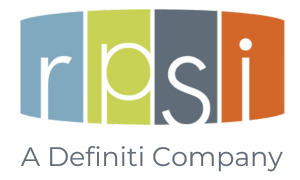Plan Sponsor Outlook – 2nd Quarter 2021
Record Gains and New Highs: There Is Some Good News, After All
Do you feel like you spent the last year gripping the steering wheel and waiting to see what would happen? You aren’t alone. Still, as we collectively look ahead and the chaos wanes, bits of good news are emerging.
In the investing world, 2020 was a year of records and firsts. The Dow Jones Industrial Average closed out the year at well over the 30,000 mark, setting a new record high as it increased more than 7% from the beginning of the year.
And right on the heels of that good news comes the annual survey from the Profit Sharing Council of America (PSCA). Based upon 2019 data — the most recent available — and released in December of 2020, the PSCA 63rd annual survey showed some record-breaking statistics. This industry-leading survey is eagerly anticipated each year because of the wealth of information presented and the large number of plans involved.
According to the report, 2019 was the third year in a row when new records were set in contribution and participation. More than 90% of employees eligible to participate had a balance in the plan, and nearly the same percentage (87.3%) of eligible employees contributed during the year — an increase from the previous year’s record high of 84.2%. On average, participants are contributing 7.6% of their pay, whereas their employers put in an average of 5.3% of pay, also hitting a new high. Between the two, participants were adding 12.9% of pay in 2019.

Roth accounts, target date funds among design trends
There were some notable changes in plan design trends for 2019. The availability of Roth accounts within 401(k) plans climbed during the year, reaching 75.1%. There has been a steady increase in the availability of Roth accounts over the last decade, rising from 45.5% in 2010. More than one-quarter of employees took advantage of the availability of Roth accounts in 2019, reaching 26.4%, an increase of 3.4% from the prior year.
In 2019, 80% of plans offered a target date fund, which is a significant increase from 2018 when 68.6% made them available. One investment trend that seemed to lose a little traction was in the socially responsible investment (SRI) arena. ESG, or environmental, social, governance and SRI investments accounted for less than 0.1% of plan assets in 2019, and fewer than 3% of plan sponsors responding to the survey reported including such options on their investment menu — representing a slight decrease from 2018. The smallest plans, those with 50 or fewer participants, and the largest — with more than 5,000 participants — were most likely to offer ESG/SRI options: 4.2% of the largest plans and 4.4% of the smallest had them on the menu.
There is much more information available from the PSCA report. You can purchase a copy on the PSCA website at https://www.psca.org
COVID-19 Impacts Retirement Prospects for Each Workforce Generation
Let’s play a little fill-in-the-blank game. Complete the following sentence:
Those poor _____________________(Millennials, GenXers, Boomers)! They really got the short end of the retirement stick, especially in light of the pandemic.

Which is the correct answer? Brace yourself for a difficult truth: all of them did. Here’s how.
Millennials started out behind in some respects, coming of age as they did during the Great Recession. They watched their parents struggle through the financial challenges of that time, then entered the workforce well-educated but with a huge amount of student loan debt. Many among this group believe Social Security will be bankrupt long before they can get it, and worry they won’t be able to save enough to retire comfortably on their own. Still, those Millennials who began investing early have enjoyed one of the longest bull market cycles in history.
Generation X was present in the workforce during the decline and fall of the pension empire — and the concurrent rise of the 401(k) plan. As such, many started saving for their own retirement early in their careers, although they took a significant hit to their savings during the Great Recession. Now that these “sandwich generation” folks are caring for both children and parents, many have been unable to recover the losses in spite of the bull market. And now, along comes a pandemic that further impacts their jobs and thus, their ability to save for the future.
Baby Boomers were well-established in their pension-earning careers when the shift to 401(k) plans began. While they were in the midst of their peak earning years, many did begin to save on their own. The Great Recession affected their balances, of course, and unlike their younger colleagues, they have less time left to recover. Simply because of age, they are more likely to be laid off or let go when the economy shifts as it did in 2020; members of this generation have lost jobs at almost the same rate as the Millennials.
The pandemic’s impact on jobs and savings is undeniable, yet workers across all generations continue to have an optimistic viewpoint of how retirement will look for them. The data, from the Transamerica Center for Retirement Studies, report that 70% of people who responded to their recent survey say they are looking forward to retirement. Sixty-five percent say they want to travel, 57% want to spend time with their family, and 46% want to pursue a hobby.
While saving enough continues to be a source of worry for all generations, 60% believe they are saving enough. Millennials either “strongly agree” or “somewhat agree” with that sentiment, with 59% of Generation Xers and 60% of Baby Boomers sharing a similar belief.
Employers have a key role to play in helping employees achieve retirement security. Many employers already sponsor a 401(k) plan, and that alone helps employees save. But there is more employers can do. For example, the Transamerica report suggests workplace financial wellness programs and phased retirements, among other suggestions. The report is available online at https://tinyurl.com/TCRS-2020.
Web Resources for Plan Sponsors
- Internal Revenue Service, Employee Plans
- U.S. Department of Labor, Employee Benefits Security Administration
- 401(k) Help Center
- PLANSPONSOR Magazine
- BenefitsLink
- Plan Sponsor Council of America
- Employee Benefit Research Institute
COVID-19 Resources
Plan Sponsors Ask…
No, but there may be another solution for them. Recognizing that many businesses and employees are suffering the financial effects of fires and other natural disasters, Congress changed the rules about plan loans and distributions for them. Similar to 2020’s COVID relief rules, the Consolidated Appropriations Act, 2021 (the Act), provides for qualified disaster distributions. Those who are eligible for these types of distributions may withdraw up to $100,000 from their eligible retirement account without penalty or withholding. Like a COVID relief withdrawal, the withdrawals may be recontributed over a three-year period. Also allowed under the Act are plan loans up to $100,000 or 100% of the present value of the participant’s vested account balance for qualified individuals. The Act makes an additional provision for participants who took a hardship distribution for the purchase or construction of a principal residence in a qualified disaster area. Such distributions, taken between 180 days before and 30 days after the qualified disaster incident, may be recharacterized if the money was ultimately used for a different purpose because of the disaster. With so many complexities involved in these new rules, we recommend speaking to the plan’s legal counsel for guidance.
Yes, retirement confidence has taken a hit for many because of repercussions of the pandemic. A January 7, 2021, article on Kiplinger’s summarized a poll they conducted with Personal Capital, a wealth management firm. In that poll, 43% reported less confidence in their ability to retire comfortably as a result of COVID-19. Forty percent said their confidence level has not changed, though. What are people planning to do about it? About one-third of them (34%) said their plans have not changed. Thirty-five percent said they expect to work longer, 34% plan to save more, and 20% said they will revise their activities and/or travel in retirement so it will be less costly. The poll shows that just over 34% said they took a distribution from a retirement account and 27.4% took a loan. Nearly one-third (32%) said their withdrawal was between $75,000 and $100,000, and 31% borrowed in that same range.
Pension Plan Limitations for 2021
- 401(k) Maximum Elective Deferral – $19,500* (*$26,000 for those age 50 or older, if plan permits)
- Defined Contribution Maximum Annual Addition – $58,000
- Highly Compensated Employee Threshold – $130,000
- Annual Compensation Limit – $290,000

Coming Soon: Refinement of Retirement Plan Priorities
As employers focused on workforce reductions and ways to get the work done remotely, setting priorities for the 401(k) plan may have been low on the to-do list. But as things begin to normalize, it might be time to push that goal setting back toward the top of the list.
As plan sponsors figure out their plan priorities for 2021, says Mercer in a new report, they should give some thought to their participants’ values. In their “Reinventing retirement. Defined Contribution plans 2021” priorities report, the international consulting firm says 2020 revealed the critical importance of focusing on employees and what they need, want and expect.
Mercer suggests starting by reviewing participant demographics and key behaviors across the benefit programs, with an eye toward the financial pressures experienced during the pandemic. Using the information gathered, it may be easier to understand subsets of employees, and what they value and need from their employer.
Another suggested priority in Mercer’s report is to expand the way plan sponsors think about defined contribution plans. Doing so could benefit participants at every stage. Of course, these plans are a long-term savings vehicle and designed for that purpose. But the last year revealed a critical lack of overall financial wellness, suggesting the need for assistance with emergency savings. For participants closer to retirement, having a regular monthly income from the plan, similar to a pension, would also be helpful.
Mercer’s 2021 report discusses four more items they believe will take on great importance in the next year. You can read it here: https://tinyurl.com/Mercer2021Priorities.
Plan Sponsor’s Quarterly Calendar
- Conduct a review of second quarter payroll and plan deposit dates to ensure compliance with the U.S. Department of Labor’s rules regarding timely deposit of participant contributions and loan repayments.
- Verify that employees who became eligible for the plan between April 1 and June 30 received and returned an enrollment form. Follow up for forms that were not returned.
- Ensure that the plan’s Form 5500 is submitted by July 31, unless an extension of time to file applies (calendar-year plans).
- Begin preparing for the distribution of the plan’s Summary Annual Report to participants and beneficiaries by September 30, unless a Form 5500 extension of time to file applies (calendar-year plans).
- Provide quarterly benefit/disclosure statement and statement of fees and expenses that were charged to individual accounts to participants (due 45 days after end of quarter).
- Submit employee census and payroll data to the plan’s record keeper for midyear compliance testing (calendar-year plans).
- Confirm that participants who terminated employment between January 1 and June 30 elected a distribution option for their plan account balance and returned their election form. Contact those whose forms were not received.
- Begin preparing the applicable safe harbor notices to employees, and plan for distribution of the notices between October 2 and December 2 (calendar-year plans).
- Distribute the plan’s Summary Annual Report by September 30 to participants and beneficiaries, unless an extension of time to file Form 5500 applies (calendar-year plans).
- Send a reminder memo or e-mail to all employees to encourage them to review and update, if necessary, their beneficiary designations for all benefit plans.
Consult your plan’s financial, legal or tax advisor regarding these and other items that may apply to your plan.
© 2021 Kmotion, Inc. This newsletter is a publication of Kmotion, Inc., whose role is solely that of publisher. The articles and opinions in this publication are for general information only and are not intended to provide tax or legal advice or recommendations for any particular situation or type of retirement plan. Nothing in this publication should be construed as legal or tax guidance, nor as the sole authority on any regulation, law, or ruling as it applies to a specific plan or situation. Plan sponsors should always consult the plan’s legal counsel or tax advisor for advice regarding plan-specific issues.
This material is intended to provide general financial education and is not written or intended as tax or legal advice and may not be relied upon for purposes of avoiding any Federal tax penalties. Individuals are encouraged to seek advice from their own tax or legal counsel. Individuals involved in the estate planning process should work with an estate planning team, including their own personal legal or tax counsel.
